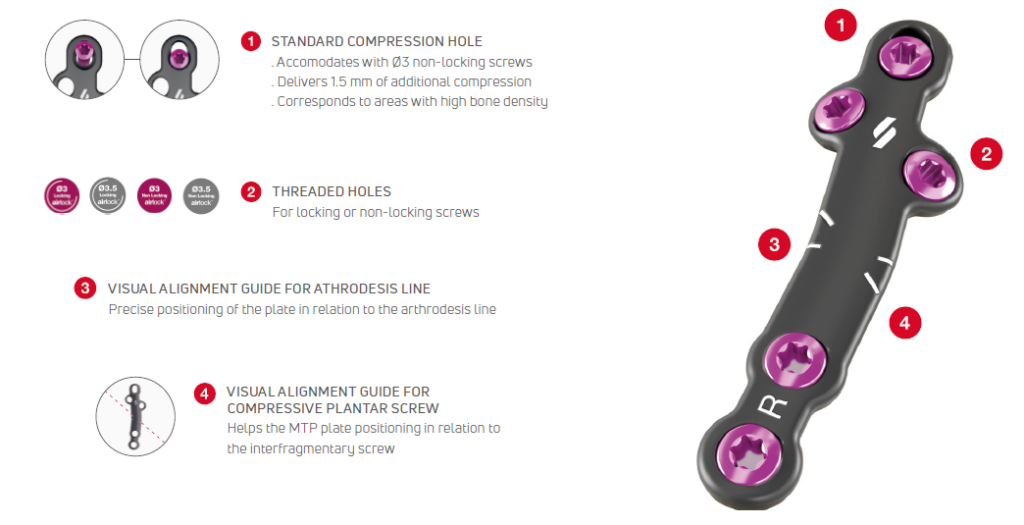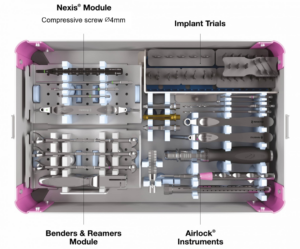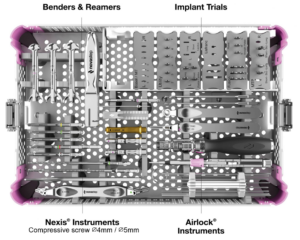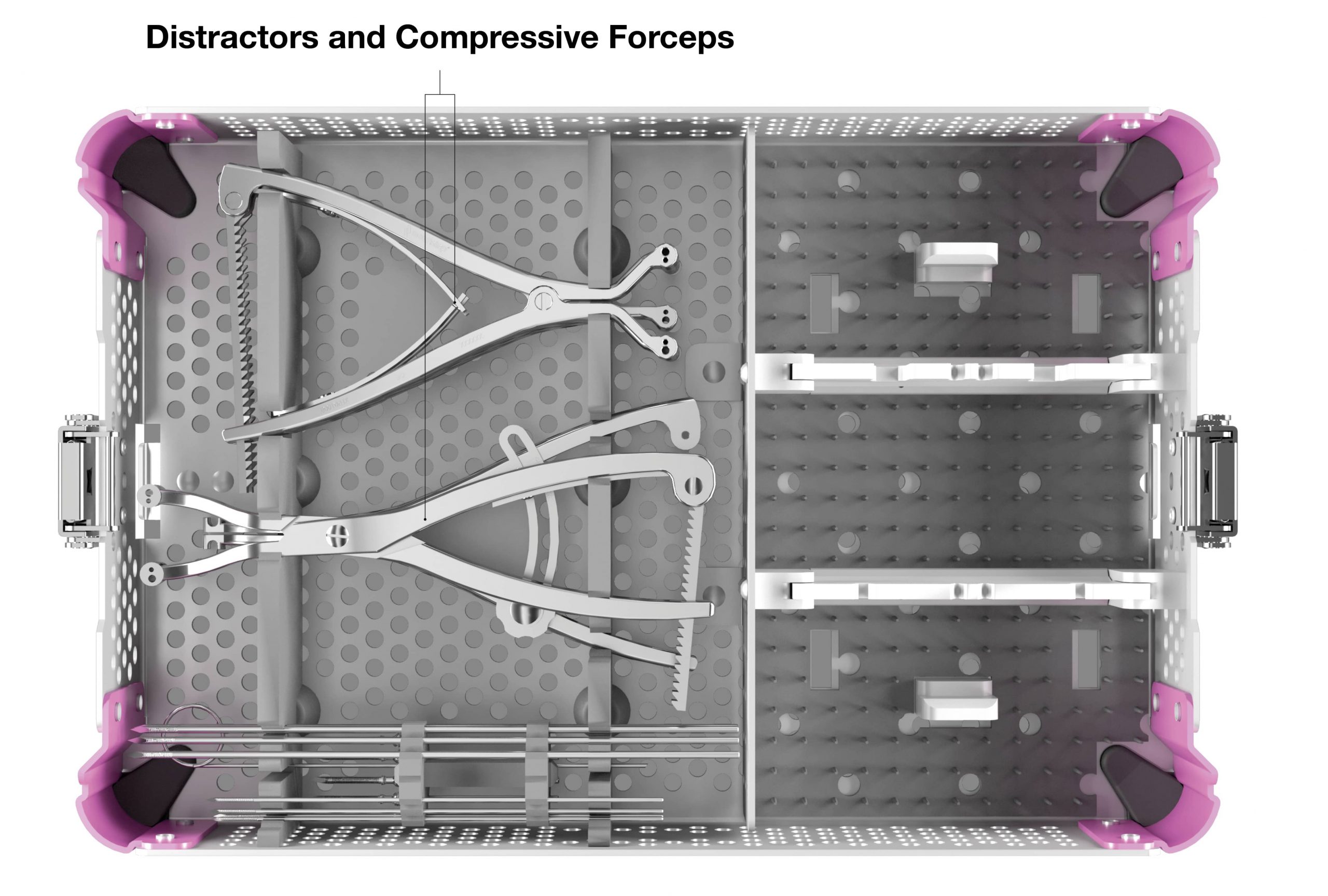Products

Low profile design > Plate thickness optimized according to the indications to limit subcutaneous discomfort.

Monoaxial & Polyaxial System
The Airlock® Ø3mm and Ø3.5mm locking and non-locking screws may be used in all Airlock plate fixation threaded holes. However the standard compression hole only accomodate Ø3mm non-locking screws, and the Presslock® compression hole only accomodate Ø3.5mm locking screws.

- Monoaxial locking screws
- Polyaxial non-locking screws
- Tapered head
- Self-tapping design
- Self-retaining driver / screw interface
Compression Screws
Additional compression can be achieved with a combined Nexis Ø4mm headless compression screw, beveled PECA Compressive Ø4mm screw, or Nexis Ø5mm headless compression screw.
All instrumentation is conveniently organized and color coded.

Airlock with Presslock Upgrade

Airlock 2.0

Airlock 2.0 Reduction Instruments

Standard & Short MTP Plates
The unique screw hole design of the MTP plates keep the overall thickness to less than 1.4mm. The anatomic plates are designed with 0° dorsiflexion, delivering 15° of metatarsophalangeal dorsiflexion while preserving 10° anatomical phalangeal valgus.
The linear (“non-clover”) distal column allows the plate to be seated underneath the EHL tendon and away from the surgical incision to reduce the risk of post-operative infection or hardware protrusion.
These low-profile plates allow treatment of patients with very thin tissue envelopes. The standard and long plates have a proximal oblong hole for an additional point of fixation and compression.


Long (Revision) MTP Plate
This plate was designed to reduce irritation to the soft tissue structures surrounding the MTP joint, by tapering the distal and proximal ends of the plate to a thickness of 1.35mm.
For improved strength, the plate increases in thickness to 1.6mm along the joint line.
The long plate includes a porthole for the insertion of graft into the fusion site once the plate is secured. This hole will also accomodate a Nexis® Snap-off screw, to secure any cancellous graft in place.

